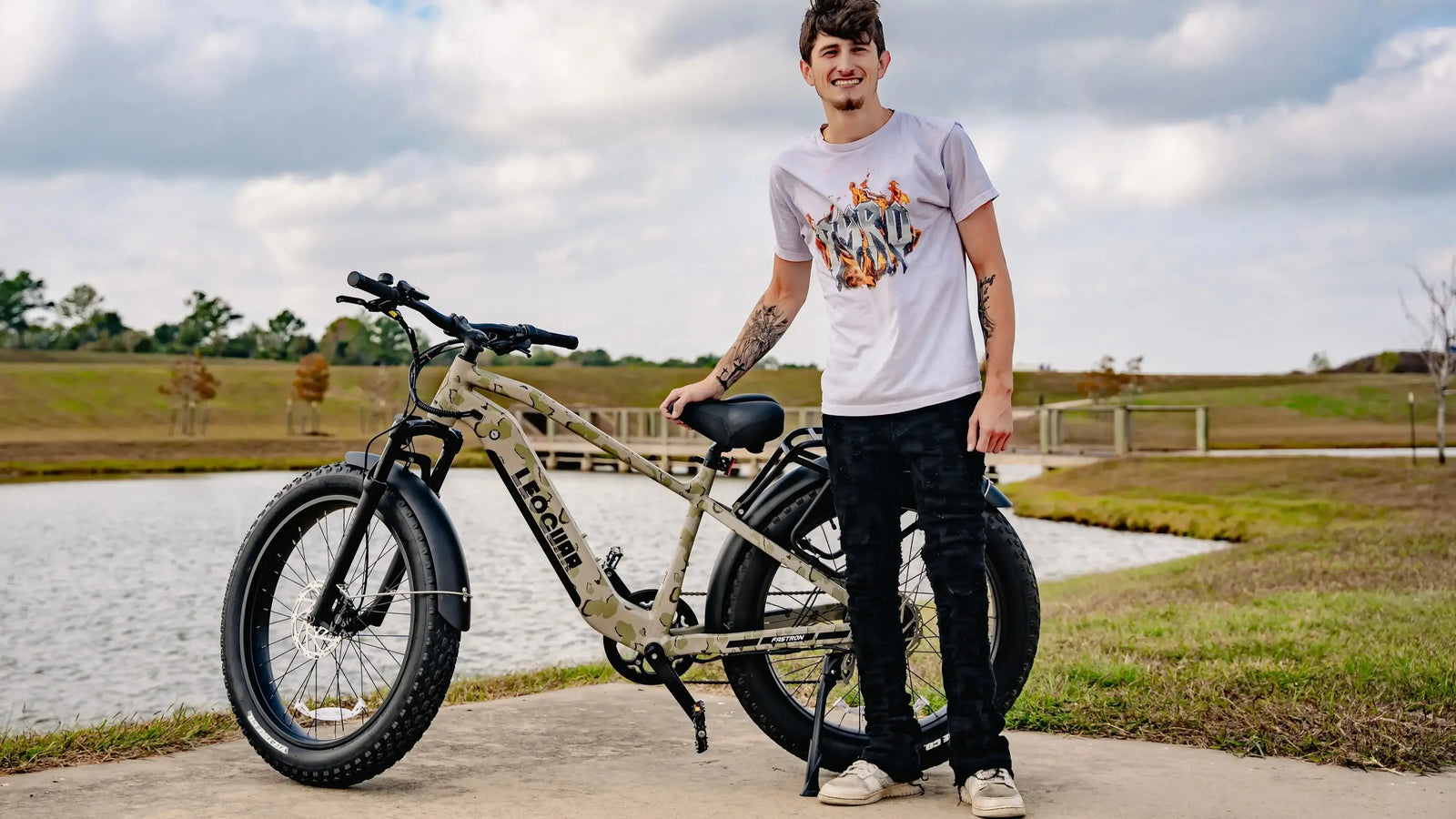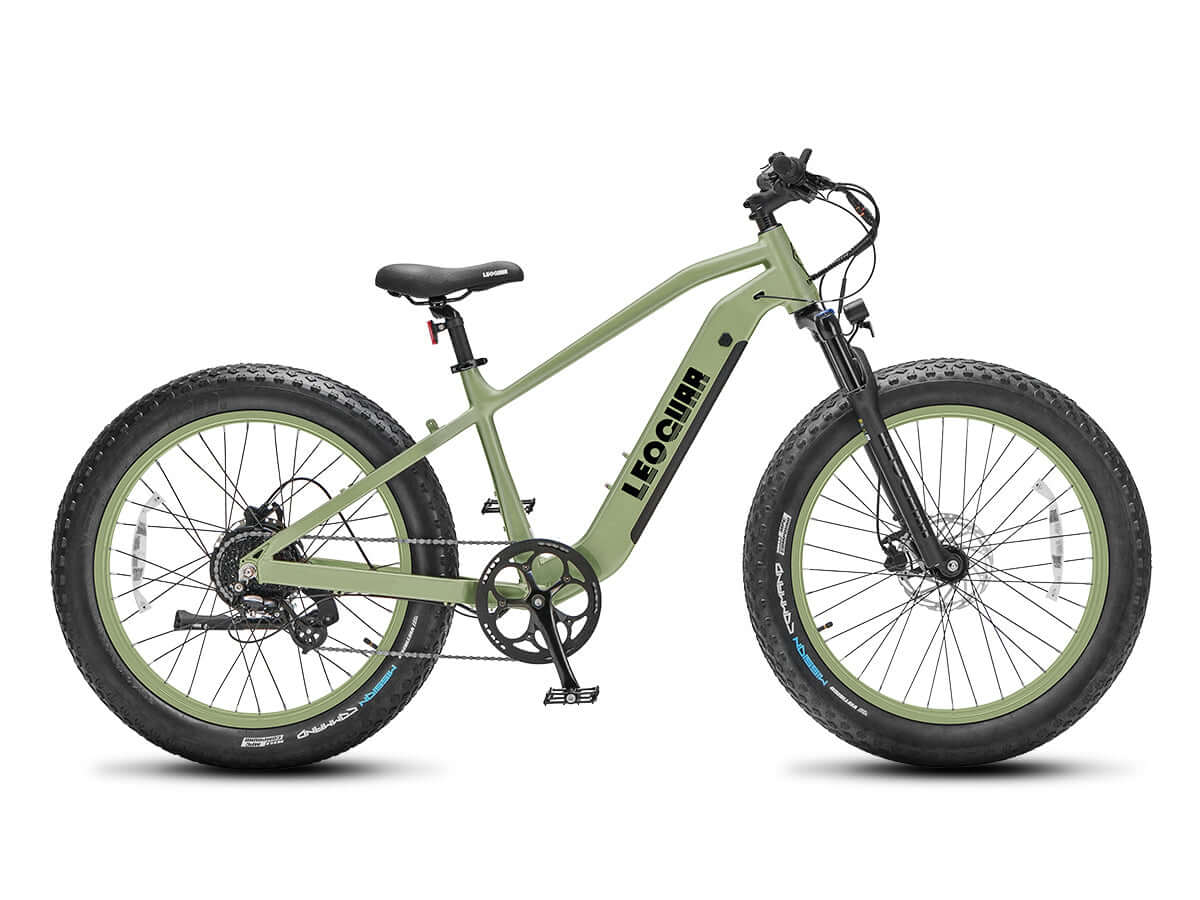
Big Tire Electric Bike Guide: Do Larger Tires Improve Rides?
The Rise of Big Tires
You've seen them everywhere: electric bikes with massive, almost cartoonishly large tires. They have a commanding presence. These bikes look like they could roll over anything in their path. This surge in popularity has many riders asking a simple, crucial question: do these big tires actually make for a better ride?
The answer isn't a straightforward yes or no. The truth is complex. The value of a big tire electric bike depends entirely on what you value as a rider. It's a choice that depends on your typical terrain, your riding style, and your ultimate priorities.
In this guide, we'll cut through the hype. We will break down exactly what a "big tire" is, explore the real-world advantages and the often-overlooked trade-offs, compare them directly to standard tires, and ultimately help you decide if this powerful trend is the right fit for your journey.
Defining a "Big Tire"
To understand their impact, we first need to define what we're talking about. The term "big tire" or "fat tire" isn't just about a look. It's a technical specification that changes how a bike interacts with the ground.
Beyond the Look
When we talk about a big tire electric bike, we are generally referring to tires that are 4.0 inches wide or wider. To put that in perspective, a standard commuter or hybrid ebike tire is usually between 1.5 and 2.2 inches wide. Even most dedicated mountain bikes use tires in the 2.2 to 2.6-inch range.
This significant increase in width allows the tire to hold a much higher volume of air. This high air volume is key. It allows the tire to be run at a much lower air pressure (PSI) than a standard tire. While a road bike might run at 80-100 PSI and a hybrid at 40-60 PSI, a fat tire often performs best between 5 and 20 PSI.

The Core Principle
The fundamental principle behind a big tire is the creation of a much larger contact patch. This is the area of the tire that is physically touching the ground at any given moment. This single factor is the root of nearly every pro and con associated with them.
Think of it like the difference between walking on fresh snow in regular boots versus wearing snowshoes. Your boots sink in because your weight is concentrated in a small area. Snowshoes spread that same weight over a much larger surface, allowing you to float on top. A big ebike tire operates on this same principle of flotation and expanded contact.
The Undeniable Advantages
When used in the right environment, the benefits of a big tire electric bike are not just noticeable. They can be transformative. They excel in specific areas where standard tires struggle.
Unmatched Stability
The wide, flexible base of a fat tire creates an incredibly planted and secure feeling. This is a massive confidence booster. It helps new riders, heavier individuals, or anyone who feels a bit unsteady on a conventional bicycle. We've found that riding over cracked pavement, small potholes, or manhole covers becomes almost unnoticeable.
This inspires a level of confidence that can fundamentally change the riding experience. The bike simply feels more forgiving of small steering errors and imperfect road surfaces. It transforms a tense balancing act into a relaxed cruise.
All-Terrain Dominance
This is the original and most celebrated purpose of the fat tire. The "flotation" effect comes from low pressure and a wide contact patch. This allows the bike to ride over soft and loose surfaces instead of digging in and getting stuck. This opens up a world of possibilities that are simply off-limits to most other bikes.
As explained in this beginner's guide to fat bikes, this ability to handle varied terrain is the very reason for their existence. A big tire electric bike is in its element on sandy beaches or desert paths, snow-covered roads and light trails, loose gravel and fire roads, and muddy farm tracks or wet fields.
A More Cushioned Ride
The huge volume of air in a big tire acts as a form of natural suspension. It effectively absorbs high-frequency vibrations and smooths out minor bumps. Before the frame's suspension fork even has to work, the tires have already soaked up much of the chatter. This results in a significantly more comfortable, almost plush ride.
On longer journeys or on notoriously rough chip-seal roads, this reduction in vibration translates directly to less rider fatigue. It reduces strain in the hands, back, and neck, making it an excellent choice for those who prioritize comfort above all else.
The Inherent Trade-Offs
For every advantage a big tire offers, there is a corresponding trade-off. Being honest about these downsides is crucial. It helps you make an informed decision and avoid potential buyer's remorse.
Increased Weight and Bulk
There's no getting around physics. A 4-inch wide tire and the corresponding wider wheel rim are significantly heavier than their standard counterparts. This added rotational mass makes the bike feel less nimble and slower to accelerate from a standstill.
Beyond the ride, the sheer bulk makes the bike more cumbersome. Lifting a 70+ pound fat tire ebike onto a car rack or carrying it up a flight of stairs is a serious undertaking. This is a practical consideration that many new buyers overlook.
Reduced Agility
On smooth, paved surfaces, the very stability that is a benefit on rough terrain can translate to sluggish handling. The large contact patch and gyroscopic effect of the heavy wheels resist quick changes in direction. We find that weaving through tight obstacles or making sharp, sudden turns requires more effort and anticipation than on a bike with narrower tires.
For riders who enjoy a zippy, responsive feel for urban commuting, a big tire e-bike can feel vague and unwieldy.
Higher Rolling Resistance
A larger contact patch means more friction with the ground. This increased rolling resistance is the single biggest drawback from an efficiency standpoint. The bike simply doesn't coast as freely or for as long as a standard ebike.
On an electric bike, this means the motor must work harder to maintain the same speed. This directly leads to increased battery consumption. You can expect to see a noticeable reduction in your maximum range per charge compared to a similar ebike with more efficient, narrower tires.
Head-to-Head Comparison
To make the choice clearer, let's compare a typical big tire electric bike directly against a standard-tire ebike. This comparison covers key performance metrics. This table illustrates the fundamental give-and-take between the two designs.
| Feature | Big Tire Ebike (4.0"+) | Standard Tire Ebike (1.75" - 2.5") |
|---|---|---|
| Ideal Terrain | Sand, snow, gravel, rough trails, broken pavement | Paved roads, bike paths, hard-packed dirt trails |
| Ride Feel: Pavement | Extremely stable, cushioned, but can feel sluggish | Nimble, efficient, responsive, but less forgiving |
| Ride Feel: Off-Road | Superior traction and flotation on loose surfaces | Good on firm trails, but struggles in sand or deep mud |
| Stability | Very high; inspires confidence | Moderate to high, depends on frame geometry |
| Agility | Low; slower to turn and maneuver | High; quick and responsive handling |
| Efficiency & Range | Lower; higher rolling resistance drains battery faster | Higher; less rolling resistance maximizes range |
| Weight | High; often 65-85+ lbs (30-39+ kg) | Moderate; often 45-65 lbs (20-30 kg) |
| Maintenance | Tires and tubes can be less common and more expensive | Widely available and affordable components |
Who Should Buy One?
With the pros and cons laid out, the decision comes down to a personal assessment of your needs. A big tire electric bike is not a one-size-fits-all solution. However, it is the perfect solution for a specific type of rider.
You'll Love a Big Tire Ebike If...
You are the kind of rider who values capability and comfort over all else. If your rides take you off the beaten path, these tires will open up new possibilities. You'll love one if you are a new or nervous rider who would benefit from the supreme confidence that a stable platform provides.
It's also an excellent choice for heavier riders who need the robust build and cushioning. If you envision your ebike as a tool for casual adventure, this is likely the bike for you. Think cruising on the beach, exploring fire roads, or simply not worrying about road quality.
You Might Prefer a Standard Tire If...
Your riding reality is primarily urban. If you stick to paved roads and bike lanes for commuting or fitness, the benefits of a big tire are outweighed by its drawbacks. You might prefer a standard tire if you value a nimble, energetic ride feel.
If maximizing your battery range for a long daily commute is your top priority, the efficiency of a narrower tire is a clear winner. Finally, if you have practical constraints like needing to carry your bike up stairs or transport it frequently in a small vehicle, the lighter weight and smaller profile of a standard ebike will make your life much easier.
The Right Tool for the Job
In the end, the debate over big ebike tires isn't about which is "better." It's about which is the right tool for your specific job. They are not a passing trend. They are a specialized design that offers unparalleled stability and all-terrain capability.
This comes at the cost of weight, agility, and battery efficiency. A big tire electric bike can deliver a supremely fun, comfortable, and confidence-inspiring ride. It allows you to explore terrain you never thought possible on two wheels. By honestly evaluating where and how you plan to ride, you can confidently decide if their unique set of strengths aligns with your vision of the perfect ebike experience.
FAQ
Q: How much do big tire electric bikes typically weigh?
A: Most big tire electric bikes weigh between 65-85 pounds (30-39 kg), which is significantly heavier than standard electric bikes that typically weigh 45-65 pounds (20-30 kg). The extra weight comes from the larger tires, wider rims, and often more robust frame construction needed to support the fat tire setup.
Q: Can I ride a fat tire ebike on regular roads and bike paths?
A: Yes, you can absolutely ride fat tire electric bikes on regular roads and bike paths. However, they may feel less nimble and responsive compared to standard tire bikes on smooth pavement. The increased rolling resistance will also reduce your battery range, but many riders find the extra stability and comfort worth the trade-off.
Q: What tire pressure should I use for fat tire electric bikes?
A: Fat tire electric bikes typically perform best at much lower pressures than standard bikes, usually between 5-20 PSI. This low pressure is what creates the "flotation" effect and comfortable ride. Start around 15 PSI and adjust based on your weight, riding conditions, and comfort preferences.
Q: Are replacement tires and parts more expensive for big tire electric bikes?
A: Yes, fat tires and related components are generally more expensive and less widely available than standard bike parts. The specialized nature of these tires means fewer manufacturers produce them, and bike shops may not always have them in stock. It's worth factoring these higher maintenance costs into your decision.
Q: How much does the bigger tire affect the bike's range per charge?
A: The increased rolling resistance from fat tires can reduce your range by 15-30% compared to a similar electric bike with standard tires. The exact impact depends on factors like tire pressure, riding surface, speed, and how much you rely on pedal assist versus throttle. Riding on soft surfaces like sand will impact range more than riding on pavement.









































Leave a comment